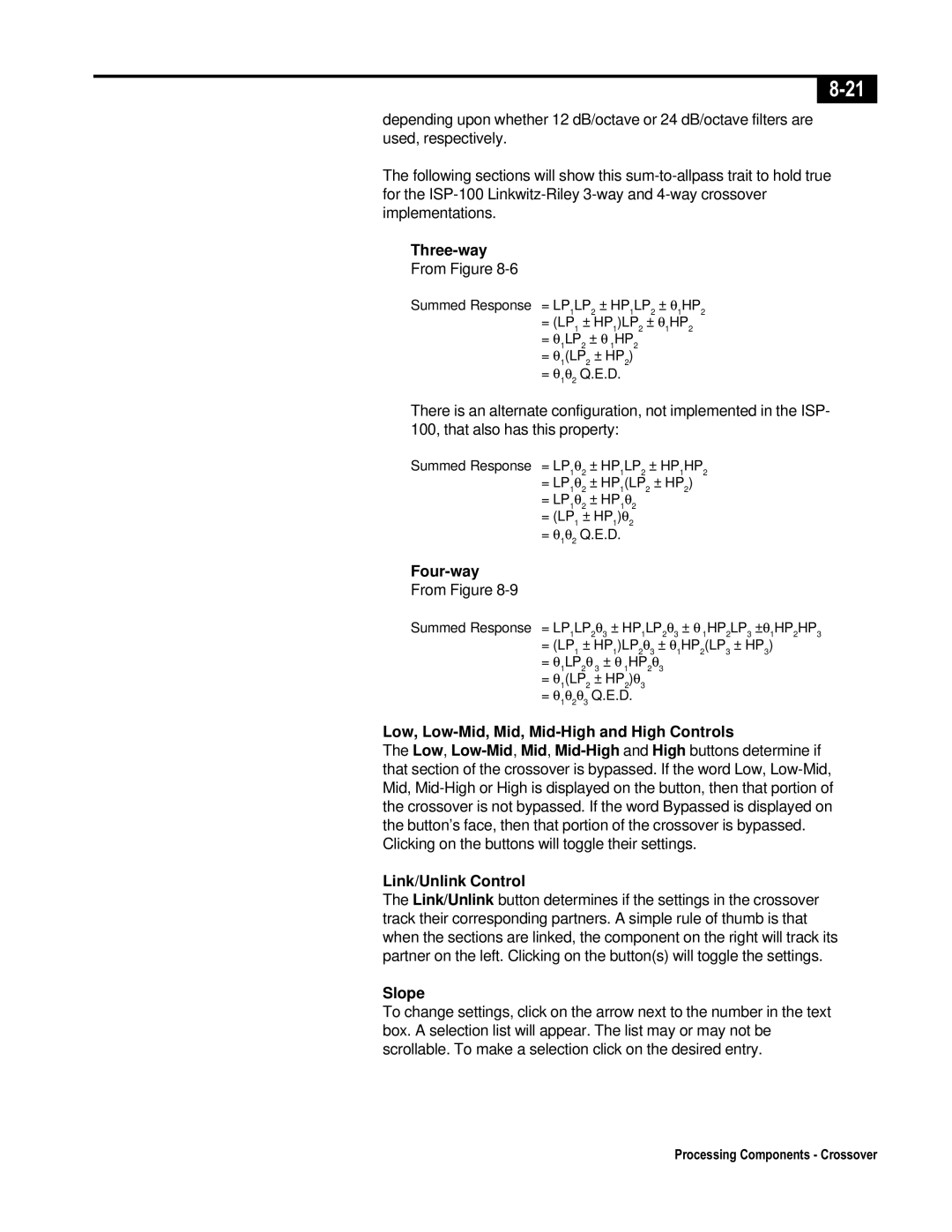depending upon whether 12 dB/octave or 24 dB/octave filters are used, respectively.
The following sections will show this
Three-way
From Figure 8-6
Summed Response = LP1LP2 ± HP1LP2 ± θ1HP2
=(LP1 ± HP1)LP2 ± θ1HP2
=θ1LP2 ± θ 1HP2
=θ1(LP2 ± HP2)
=θ1θ2 Q.E.D.
There is an alternate configuration, not implemented in the ISP- 100, that also has this property:
Summed Response = LP1θ2 ± HP1LP2 ± HP1HP2
=LP1θ2 ± HP1(LP2 ± HP2)
=LP1θ2 ± HP1θ2
=(LP1 ± HP1)θ2
=θ1θ2 Q.E.D.
Four-way
From Figure
Summed Response = LP1LP2θ3 ± HP1LP2θ3 ± θ 1HP2LP3 ±θ1HP2HP3
=(LP1 ± HP1)LP2θ3 ± θ1HP2(LP3 ± HP3)
=θ1LP2θ 3 ± θ 1HP2θ3
=θ1(LP2 ± HP2)θ3
=θ1θ2θ3 Q.E.D.
Low, Low-Mid, Mid, Mid-High and High Controls
The Low,
Link/Unlink Control
The Link/Unlink button determines if the settings in the crossover track their corresponding partners. A simple rule of thumb is that when the sections are linked, the component on the right will track its partner on the left. Clicking on the button(s) will toggle the settings.
Slope
To change settings, click on the arrow next to the number in the text box. A selection list will appear. The list may or may not be scrollable. To make a selection click on the desired entry.
Processing Components - Crossover
